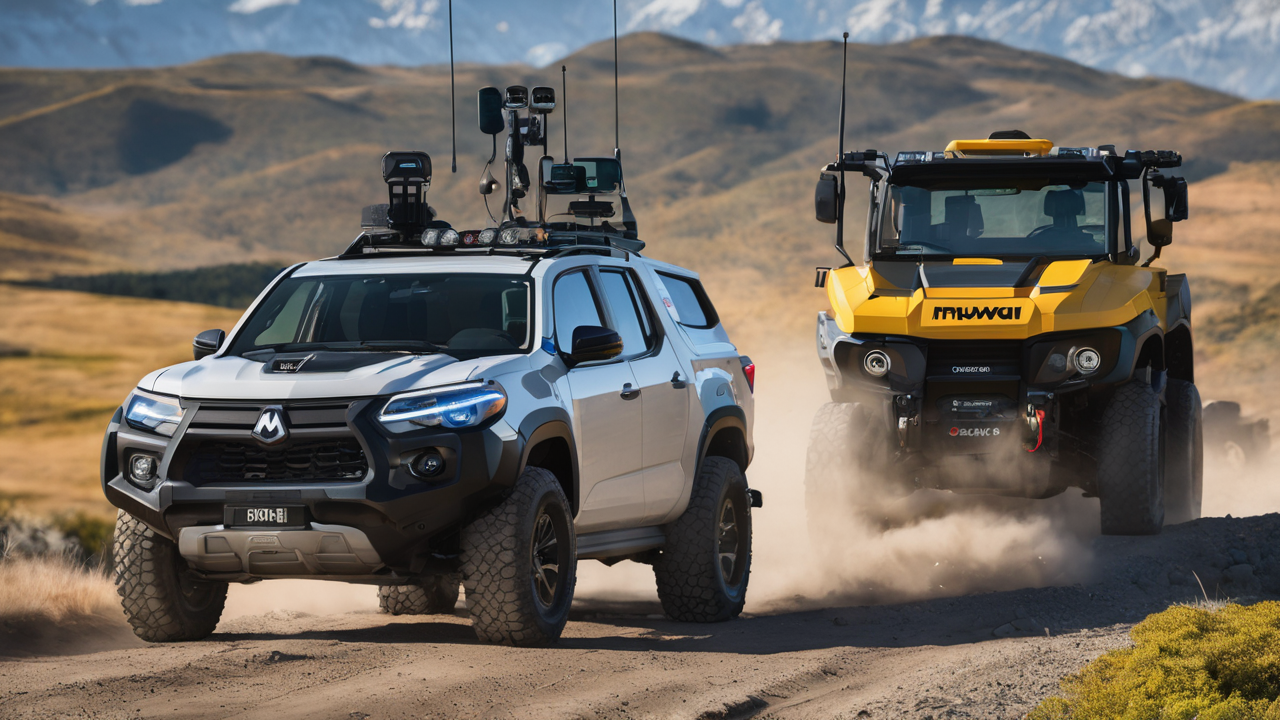Evaluating Long Range Walkie Talkies: Features to Consider
Understanding the Importance of Range and Reliability
Range and reliability are crucial factors when choosing long range walkie talkies. These devices must work in various environments and conditions. A good range ensures clear communication over long distances. This is vital for safety and coordination in remote areas.

Reliability means the device works consistently, even in harsh weather. It should have a strong signal and clear audio. Dependable walkie talkies are essential for emergency situations. They can be lifesavers when other communication methods fail.
When selecting a long range walkie talkie, consider the terrain you'll use it in. Mountains, forests, and urban areas affect signal strength differently. Look for models that perform well in your specific environment.
Key Specifications for Long Range Communication
When evaluating long range walkie talkies, pay attention to these key specifications:
- Frequency band (UHF or VHF)
- Wattage (power output)
- Channel capacity
- Privacy codes
- Squelch function
- Weather alerts
- GPS capabilities
UHF is better for urban areas, while VHF works well in open spaces. Higher wattage means longer range, but also faster battery drain. More channels allow for better communication organization.
Privacy codes prevent interference from other users. Squelch function reduces background noise. Weather alerts are crucial for outdoor activities. GPS can be a lifesaver in remote areas.
Consider which features are most important for your needs. Balance range and battery life with your usage requirements.
Comparing Durability and Battery Life
Durability is key for long range walkie talkies, especially in rugged environments. Look for:
- Water resistance or waterproofing (IPX rating)
- Shock-resistant casing
- Dust-proof design
- Operating temperature range
A high IPX rating ensures the device can withstand rain or accidental submersion. Shock-resistant casings protect against drops and impacts. Dust-proof designs are crucial in sandy or dusty environments.
Battery life is equally important. Consider:
- Battery type (rechargeable or disposable)
- Battery capacity (mAh)
- Power-saving features
- Charging options (USB, car charger, solar)
Rechargeable batteries are cost-effective for frequent use. Higher mAh ratings mean longer battery life. Power-saving features can extend usage time. Multiple charging options provide flexibility in the field.
Balance durability and battery life based on your intended use. Rugged outdoor activities may require more durable models with longer battery life.
Top Long Range Walkie Talkies in the Market
Leading Brands and Their Flagship Models
Several brands dominate the long range walkie talkie market. Each offers unique features and advantages:

- Motorola Solutions
- Talkabout T800: Known for its Bluetooth connectivity and mobile app integration
- APX NEXT: A rugged, mission-critical device for professionals
- Midland Radio
- GXT1000VP4: Popular for its 50-channel GMRS radio and 36-mile range
- X-TALKER T75VP3: Features clear transmission and weather scan technology
- Cobra Electronics
- ACXT1035R FLT: Offers floating design and built-in flashlight
- RX680: Known for its long range and rugged build
- Uniden
- SX507-2CKHS: Features 50-mile range and privacy codes
- GMR5095-2CKHS: Offers NOAA weather alerts and 50-mile range
These brands consistently deliver quality and innovation in their products. Consider your specific needs when choosing between them.
Innovations in Portable Communication Technology
Recent innovations have greatly improved long range walkie talkies:
- Bluetooth connectivity: Allows pairing with smartphones for extended features
- GPS integration: Enables location sharing and tracking
- Digital signal processing: Improves audio clarity and range
- Noise cancellation: Enhances communication in loud environments
- Multi-channel monitoring: Allows scanning of multiple frequencies
- Voice activation: Enables hands-free operation
- Encryption: Provides secure communication for sensitive information
These features enhance functionality and user experience. They make walkie talkies more versatile and reliable in various scenarios. Consider which innovations are most beneficial for your intended use.
User Experience and Customer Support
User experience and customer support are crucial when choosing a long range walkie talkie. Look for:
- Intuitive interface and easy-to-use buttons
- Clear display with backlight for night use
- Comfortable grip and ergonomic design
- Comprehensive user manual and online resources
- Responsive customer service
- Warranty coverage and repair options
Read user reviews to gauge real-world performance and reliability. Check for common issues and how the company addresses them. Good customer support can make a big difference in troubleshooting and maintenance.
Consider the learning curve for each model. Some advanced features may require more training. Ensure the chosen model matches your technical comfort level.
Implementing Long Range Walkie Talkies in Various Sectors
Military Applications: Tactical Advantages and Considerations
Military forces rely heavily on long range walkie talkies for tactical communication. These devices offer:

- Secure, encrypted transmissions
- Rugged, all-weather construction
- Long battery life for extended missions
- Multi-channel capabilities for coordinated operations
- Compatibility with other military equipment
Key considerations for military use include:
- Frequency hopping to prevent interception
- Integration with command and control systems
- Resistance to jamming and interference
- Ability to operate in extreme environments
Military-grade walkie talkies often have advanced features not found in civilian models. They prioritize security, reliability, and interoperability with other systems.
Emergency Services and Public Safety Use Cases
Emergency services and public safety agencies rely on long range walkie talkies for critical communication. These devices are essential for:
- Coordinating first responders during disasters
- Managing large-scale events and crowd control
- Facilitating search and rescue operations
- Maintaining communication during power outages
Key features for emergency services include:
- Interoperability with other agencies' systems
- Clear audio quality in noisy environments
- Long battery life for extended shifts
- Durability to withstand harsh conditions
- Built-in emergency alert functions
Reliable communication is crucial for saving lives and managing crises. Agencies must choose devices that meet their specific operational needs and regulatory requirements.
Leisure and Adventure: Hiking and Camping Applications
Long range walkie talkies are popular among hikers and campers for safety and convenience. They offer:
- Communication in areas without cell coverage
- Group coordination on trails or in campsites
- Emergency signaling capabilities
- Weather alerts for outdoor safety
For leisure use, consider:
- Lightweight and compact design for easy carrying
- Water resistance for outdoor conditions
- Long battery life or rechargeable options
- Simple interface for easy use
- Affordable price point for casual users
Walkie talkies enhance safety and enjoyment in outdoor activities. They provide peace of mind and improve group coordination in remote areas.


